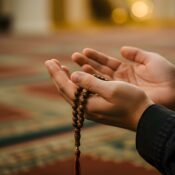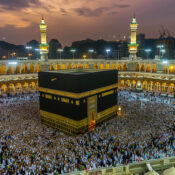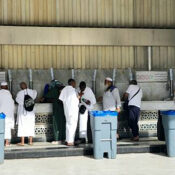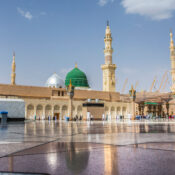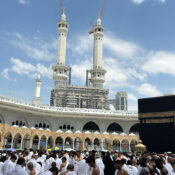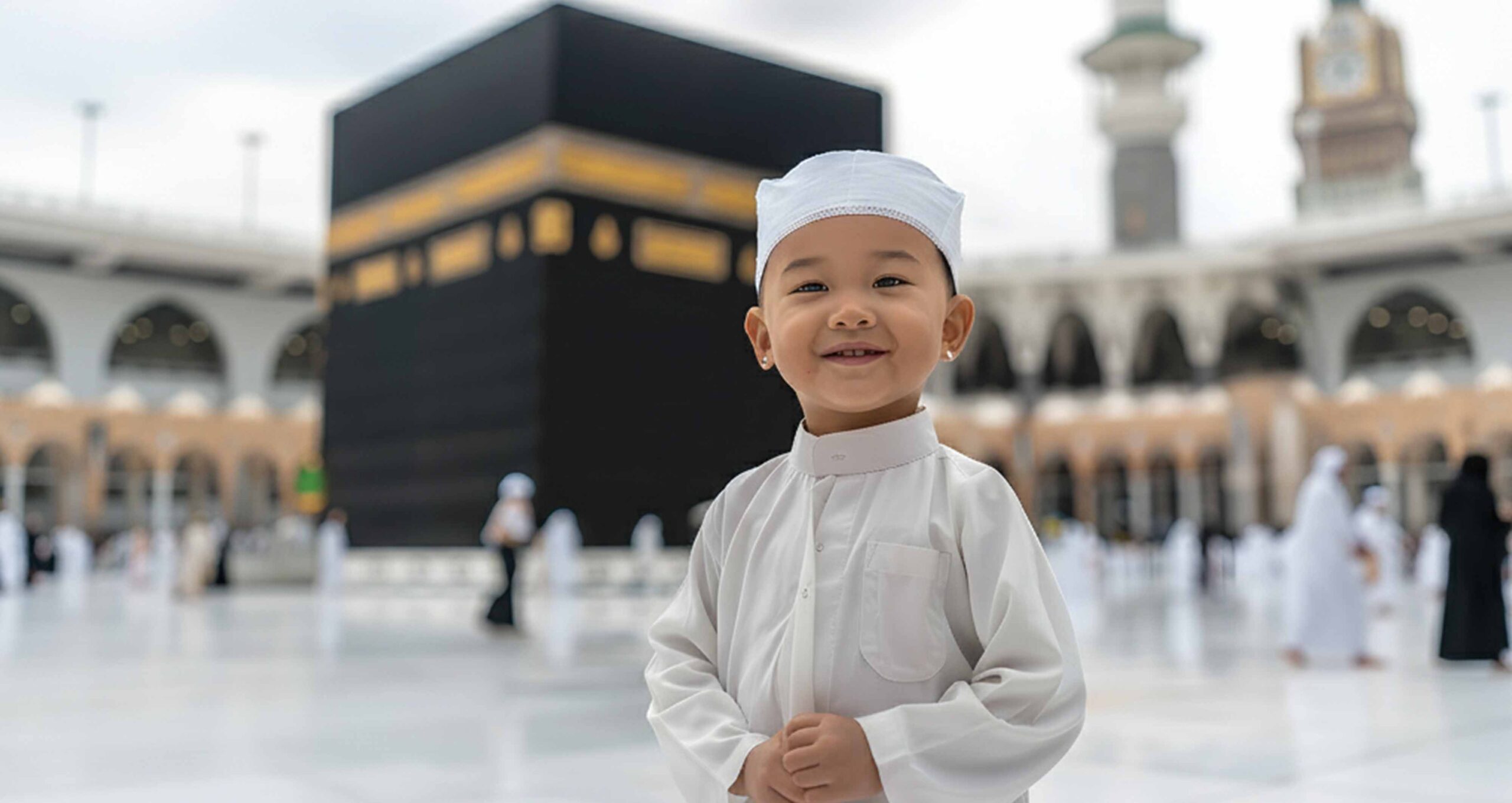
How Can I Teach My Kids About Hajj
Teaching Kids About Hajj: A Spiritual Journey
Hajj, one of the five pillars of Islam, is not only a sacred obligation but also a profound spiritual journey that represents unity, devotion, and submission to Allah. For many Muslims, performing Hajj is a lifelong dream, but teaching children about its importance can begin long before they are old enough to undertake the pilgrimage themselves.
Introducing children to Hajj in a thoughtful and engaging way nurtures their spiritual connection, strengthens their identity as Muslims, and gives them a deeper appreciation of their faith and heritage. When children grow up with this awareness, the values and lessons of Hajj—patience, humility, gratitude, and devotion—become part of their daily lives.
In this expanded guide, we’ll explore practical ways parents and educators can help children understand the significance of Hajj and inspire them to develop a lifelong bond with this sacred journey.
Start with the Five Pillars of Islam
Begin by teaching children that Hajj is one of the five pillars of Islam, alongside Shahadah (faith), Salah (prayer), Zakah (charity), and Sawm (fasting in Ramadan). Hajj Packages from Pakistan Explain that these pillars are the foundation of a Muslim’s faith and Hajj is the pinnacle of devotion, representing both worship and unity with millions of other Muslims around the world.
Keep the explanation simple for younger children. For example: “Just like we pray every day and fast in Ramadan, Muslims also have a special journey called Hajj, where they visit the Kaaba in Makkah.” This kind of relatable language helps them grasp the concept step by step.
Use Visual Aids to Bring Hajj to Life
Children are naturally curious and respond well to visuals. Use resources such as illustrated storybooks, age-appropriate documentaries, educational apps, or animated videos to explain the rituals of Hajj.
- Show them how pilgrims wear white Ihram clothes.
- Explain the journey of moving from the Kaaba to Arafat, Muzdalifah, and Mina.
- Use maps and pictures of Makkah to help them visualize the holy sites.
You can also use interactive toys or flashcards to reinforce learning. For younger children, colorful illustrations of the Kaaba or pilgrims can spark interest and curiosity.
Engage Through Storytelling
Storytelling is one of the most effective ways to teach children about faith. Share stories about Prophet Ibrahim (AS), Hajar (RA), and Ismail (AS), whose sacrifices and devotion form the foundation of the rituals of Hajj.
For example, narrate the story of Hajar running between Safa and Marwah in search of water for her son, leading to the miraculous spring of Zamzam. Private Hajj Package 2025 Children often remember stories better than abstract facts, and these powerful examples of faith and perseverance will stay with them.
If you have performed Hajj or Umrah, share your own experiences. Talk about what you saw, how you felt, and the lessons you learned. Personal stories make the journey relatable and inspire children to dream of one day experiencing it themselves.
Make Learning Interactive with Activities
Hands-on activities help children learn through play and practice. Here are some ideas:
- Build a Kaaba model using cardboard, clay, or building blocks, then guide them in performing a mock Tawaf around it.
- Role-play rituals like throwing pebbles at the Jamarat, symbolizing resistance against evil.
- Draw and color scenes from Hajj, such as pilgrims walking together, or tents in Mina.
- Craft Ihram clothes from simple white fabric to help them understand the equality and humility represented by this attire.
Such activities are not just fun but also meaningful, allowing children to internalize lessons in a memorable way.
Teach the Talbiyah Early
The Talbiyah—“Labbayk Allahumma Labbayk”—is a beautiful prayer recited throughout the pilgrimage. Teaching children the Talbiyah at an early age introduces them to the spiritual rhythm of Hajj.
You can recite it together during car rides, play it in the background at home, or include it as part of bedtime prayers. Children often enjoy repeating rhythmic words, and learning the Talbiyah will help them feel connected to the millions of pilgrims who chant it during Hajj.
Encourage Questions and Open Dialogue
Children are naturally inquisitive, and Hajj is full of symbolic acts that may spark their curiosity. Encourage them to ask questions like:
- Why do Muslims go to Makkah?
- Why do they wear white clothes?
- What does throwing the stones mean?
Answer these questions with patience, using age-appropriate explanations. For example, explain that pilgrims wear white because everyone is equal before Allah, and throwing stones represents saying “no” to bad choices and following the path of goodness.
By fostering open dialogue, you create a safe environment where children feel encouraged to learn and connect deeply with their faith.
Introduce Umrah as a Gentle First Step
Umrah, often called the “lesser pilgrimage,” is an excellent way to introduce children to the sacred journey before Hajj. Since it can be performed at any time of the year and involves fewer rituals, it provides children with a practical experience of visiting Makkah and performing Tawaf and Sa’i.
Taking children for Umrah, if possible, allows them to witness the Kaaba, drink Zamzam water, and see Muslims from all over the world worshiping together. These experiences leave a lasting impression and create a sense of excitement for performing Hajj in the future.
Highlight the Values of Hajj
Beyond the rituals, Hajj teaches universal values that children can apply in their everyday lives:
- Patience: Waiting in long lines and walking long distances reminds us to be patient.
- Equality: Pilgrims wear the same clothes, showing that no one is better than another.
- Gratitude: Thanking Allah for the chance to worship and be part of the Ummah.
- Kindness: Helping fellow pilgrims reminds us to be caring and compassionate.
Teaching these lessons through simple examples and daily reminders helps children practice the spirit of Hajj in their own lives.
Make It a Family Tradition
Creating family traditions around Hajj can also strengthen the connection. During Dhul Hijjah, decorate your home with simple crafts related to Hajj, read books together, and share stories of the prophets. Involve children in Eid al-Adha preparations, teaching them the significance of sacrifice and sharing with others.
When Hajj is presented as part of a broader lifestyle of faith and family bonding, children feel proud of their identity and heritage.
Conclusion
Teaching children about Hajj is more than just explaining rituals—it’s about nurturing a love for Allah, instilling values of humility and gratitude, and connecting them to the rich spiritual heritage of Islam. Vip Hajj Package Pakistan By combining storytelling, visual aids, interactive activities, and open dialogue, parents can make the lessons of Hajj both engaging and meaningful.
Introducing the Talbiyah early, answering their questions with care, and even experiencing Umrah together as a family can lay a strong foundation for their spiritual journey. With the right approach, children will not only understand the importance of Hajj but also carry its values into their daily lives, fostering a deep love for their faith that will last a lifetime.
Hajj is more than a journey to Makkah—it is a journey of the heart. By guiding our children early, we prepare them not just for the pilgrimage, but for a life of devotion, gratitude, and connection to Allah.


